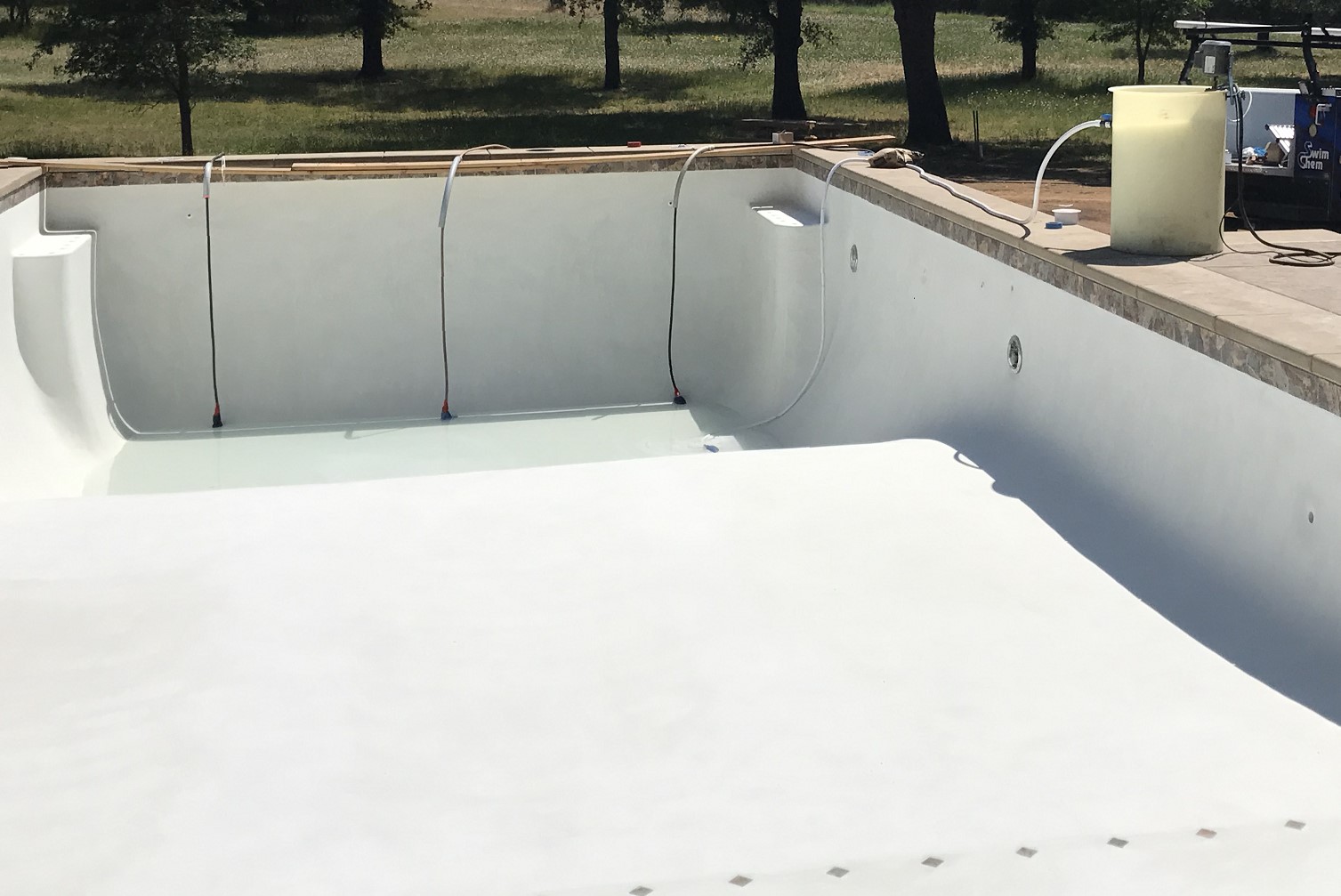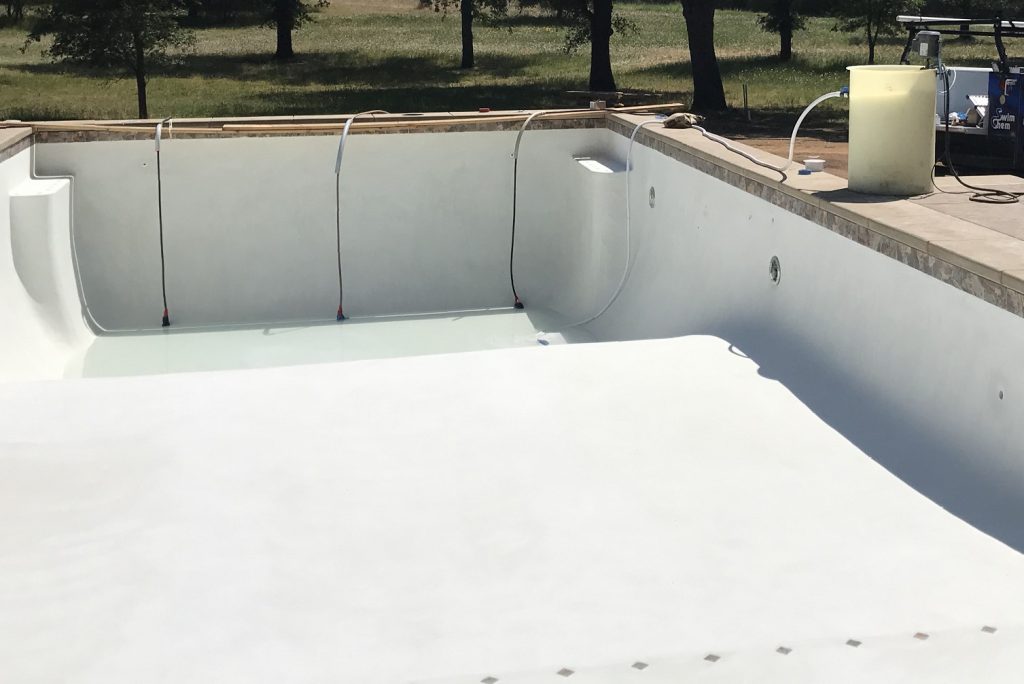Crucial Start (the importance of plaster start-ups)


In WaterShapes’ June 2nd edition, we ran a description of plaster start-up procedures as taught by chemical manufacturer, Biolab. Always an attention-grabbing topic, the piece drew a strong response. Among those offering feedback, service veteran Jerry Wallace, felt that the story fell short, and offered this piece to add to the discussion.
By Jerry Wallace
The importance of a proper and immediate start-up of a newly plastered swimming pool cannot be overstated. But before we get into the “how”, we should first understand the “why”.
When fresh untreated water is introduced into a newly plastered swimming pool, there are immediate reactions between the water and the plaster as the water seeks mineral equilibrium. This means the water will seek out plaster constituents to satisfy its “desires.”
Plaster is inherently rich in soluble calcium products and water is the universal solvent. This means the water will immediately begin drawing calcium products out of the new plaster, thus ultimately changing the plaster and making it more porous.
As this process proceeds, the water’s chemistry also changes. Most dramatically, the pH level may increase to more than 10, where 7.2 to 7.8 is the desired range. As this happens, the water becomes oversaturated and cannot keep all the dissolved calcium in solution. The calcium precipitates out into what is commonly called “plaster dust.”
Ideally, we would like to have zero plaster dust in a newly plastered pool. In a best-case scenario, we’re able to treat and balance the water before it goes into the pool and has a chance to interact with the new plaster.
BASIC PROCEDURES
It is generally accepted that the first 28 days of the curing period is key. There are a couple of different processes that are well known that help achieve optimal curing. Two viable options are: the bicarb start-up and Orenda start-up.
Before starting either process, you should test the fill water and calculate how much of the needed chemicals are required for optimal water balance. Both processes involve setting up a pre-treatment barrel where chemicals are added to fill water flows before it enters the pool.
The chemicals in the barrel give the water what it needs so it will not draw it out of the plaster. A stain and scale inhibitor chemical should also be introduced via this method to prevent metals and other minerals from precipitating on to the new plaster finish.
ONCE THE POOL IS FILLED
The previous paragraph addresses the best-case scenario where we can be on site and pre-treat the water before it enters the pool. That is not always possible in today’s busy world. Often the pool is already full by the time the start-up is to take place.
If this is the hand you’ve been dealt, you can always follow the National Plaster’s Council (NPC) start-up program. You can find it by visiting www.NPConline.org.
Always test the pool water’s source and retain the results in your records. I suggest starting the filtration system before beginning any work on the start-up then allowing the system to run continuously for the first three-to-five days, or until all the plaster dust is completely removed from the pool. This ensures that the circulation and filtration systems are fully operational. (If they are not, I will usually not proceed with start-up. You can’t start-up a pool that isn’t working.)
Next, do a complete test of the already filled pool’s water. You will likely see an increase in the calcium hardness and pH and often the total alkalinity as well. This is due to the water’s immediate interaction with the new plaster, as described above.
Before adding any other chemicals, add a good stain and scale inhibitor according to manufacturer directions.
FINDING THE BALANCE
The next step should be to adjust the total alkalinity into the proper range. Always address the total alkalinity first as it has a bearing on the adjustment of the pH, which is the next component to address.
The timing of these first three chemical additions can occur in close succession to one another. That is usually the end of my first-day operation, unless I can make another trip later in the day after several hours have passed.
The pool surface should be brushed two-to-three times daily until all the plaster dust has been removed. On the second visit, we again start with a full battery of pool water tests.
If we were successful on the first visit, our alkalinity and pH are now in the proper range. On freshly plastered pools, the pH will have a tendency to want to climb so we want to always push it down to the lower end of the acceptable range. If we need to add more acid to lower the pH. that is the next step.
For the second visit, we want to increase the calcium hardness to a minimum of 200 ppm. (This was a point missed in the June 2nd start-up article). Visit three should occur the following day and at this point we are trying to maintain all the parameters in their proper ranges. We can now add a small amount of cyanuric acid adding any chlorine when conditions allow.
I hope this article provides a better understanding of the why we need to do this correctly and provides you with options for start-ups that may suit your needs. All of these options should include routine follow-ups throughout the first 28 days to ensure that the water remains within the proper ranges.
Jerry Wallace is President of Swim Chem, Inc., a swimming pool service and repair company serving nine counties in northern California. He has 45 years’ experience in the swimming pool service industry.










